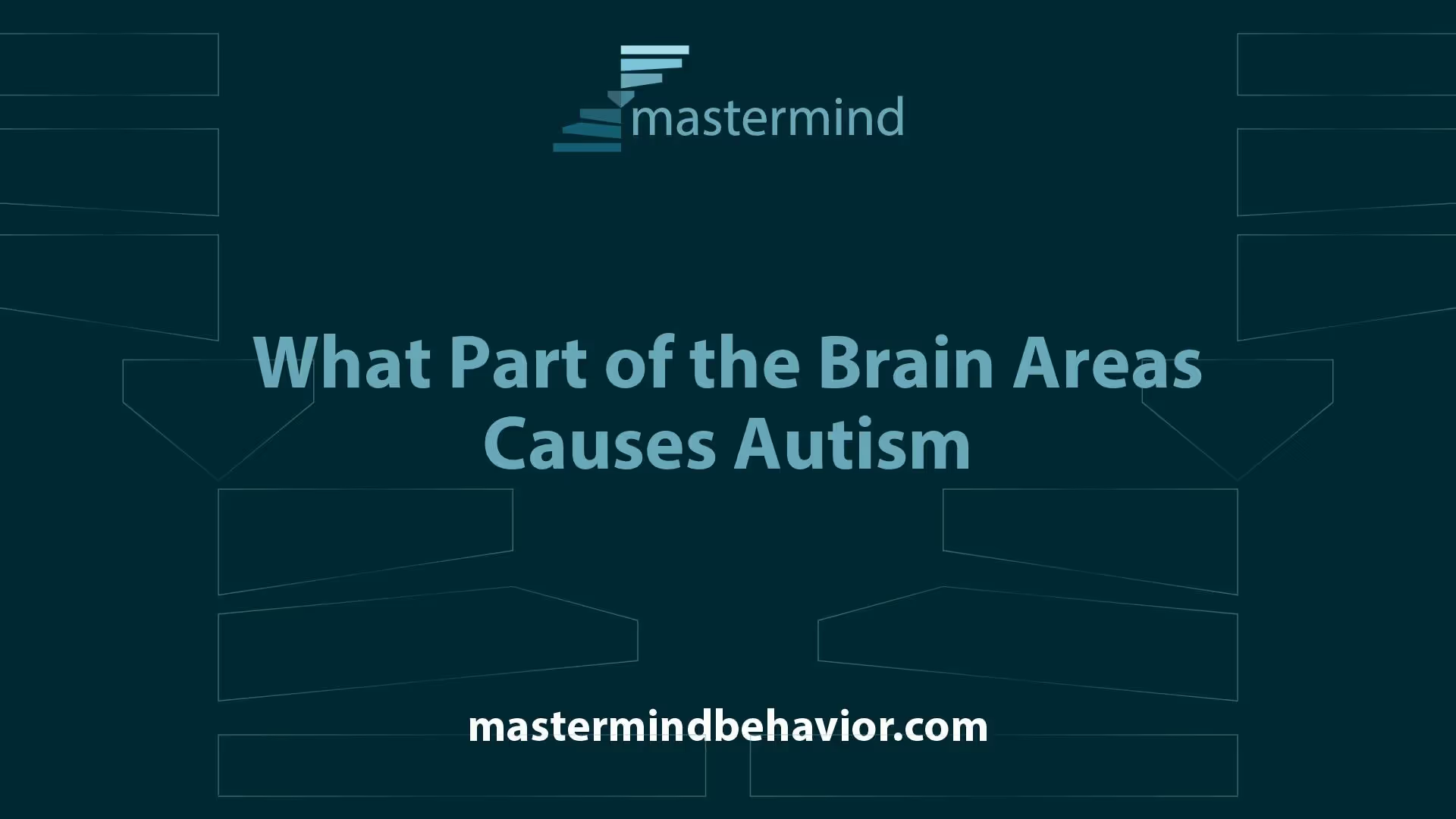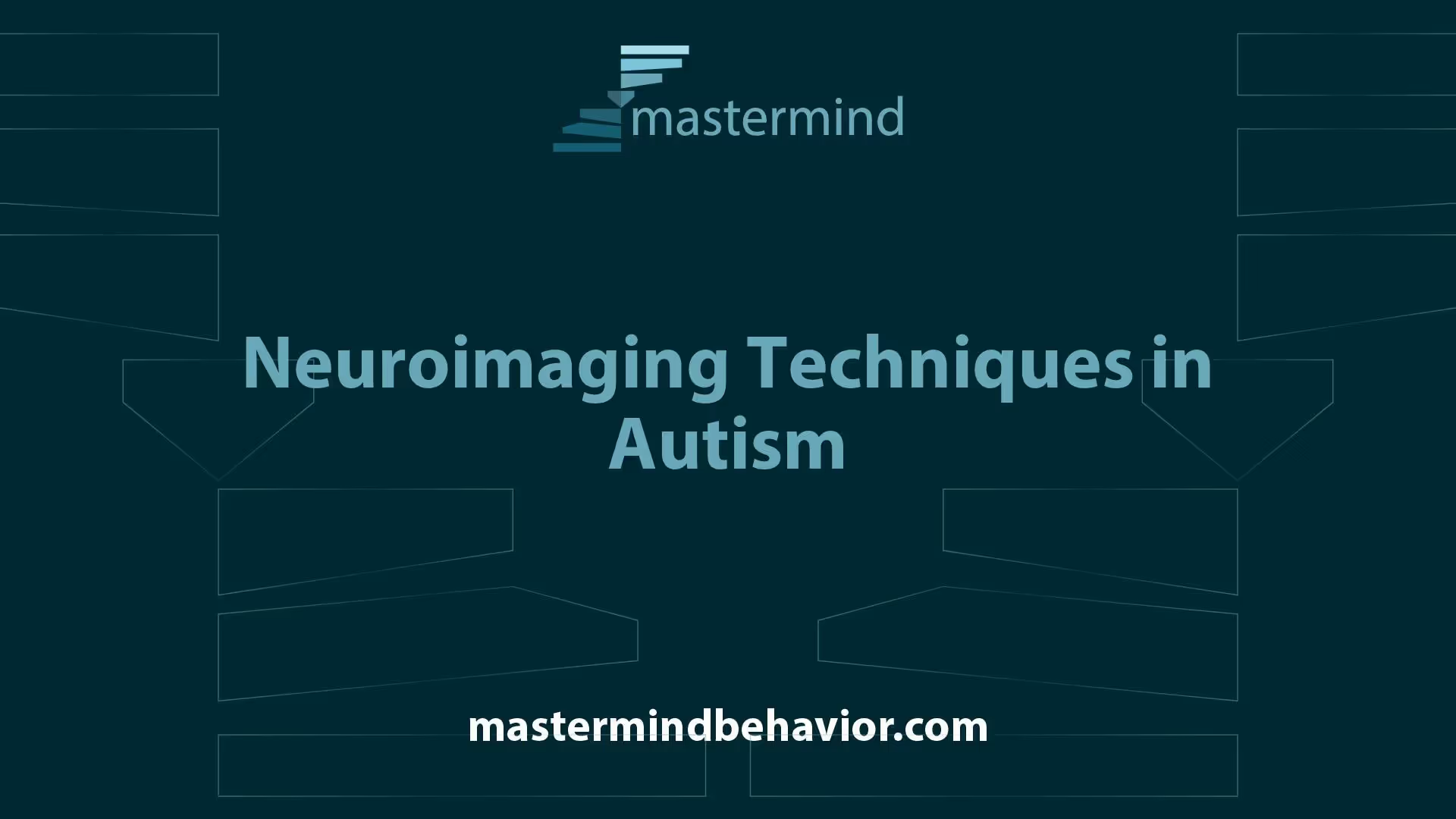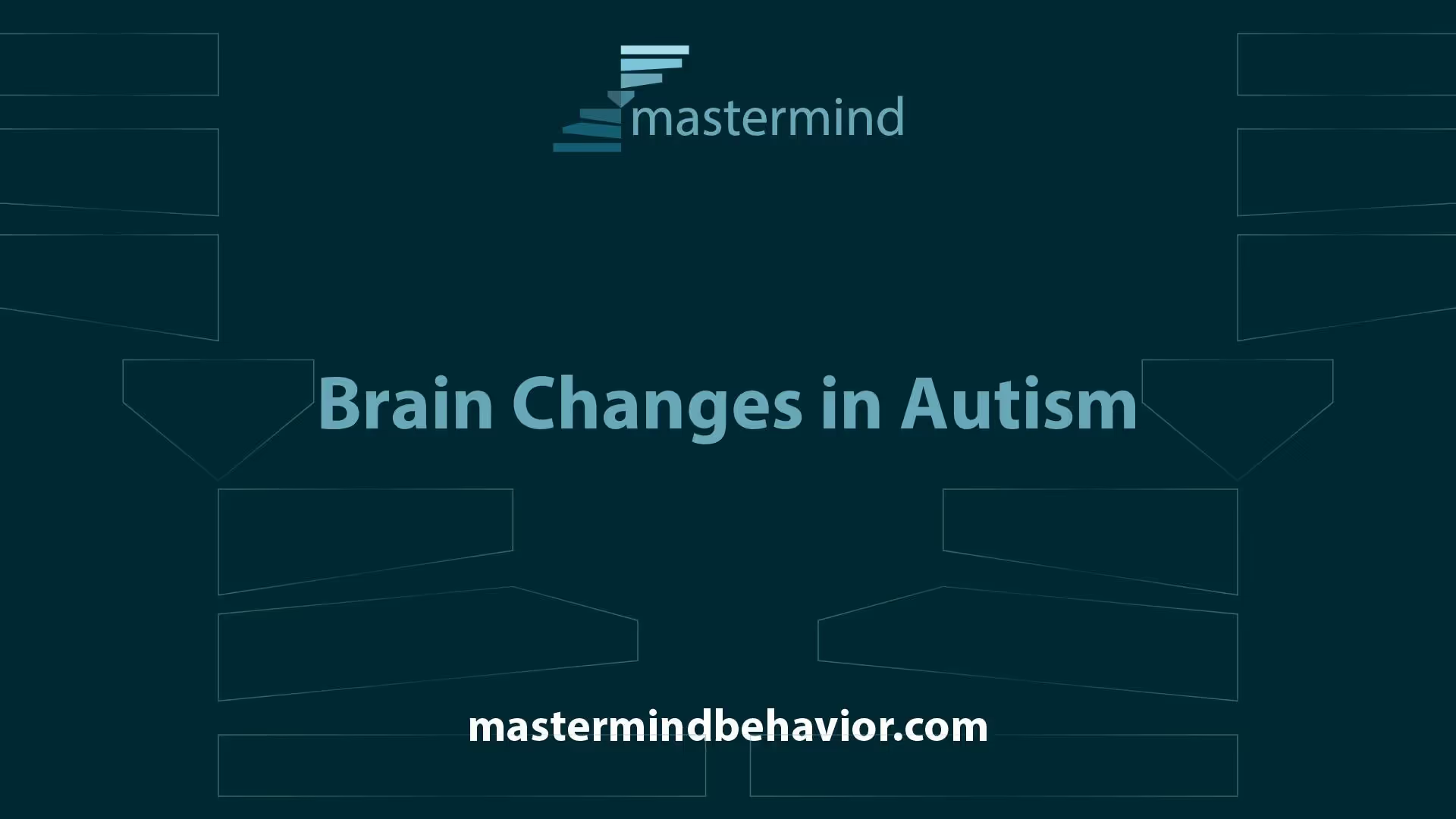What Part of the Brain Areas Causes Autism


Brain Development in Autism
Understanding brain development in individuals with Autism Spectrum Disorder (ASD) involves examining the interplay between genetic and environmental factors, as well as identifying structural abnormalities in the brain.
Genetic Influences on Brain Development
Genetic factors play a substantial role in the development of autism. Changes in certain genes or the genome can increase the risk of a child developing autism. Some of these genetic changes are inherited from parents, which can further contribute to the development of ASD. A meta-analysis of seven twin studies suggests that 60 to 90% of the risk for autism stems from an individual's genetic makeup [1]. This strong genetic component highlights the importance of considering inherited traits when investigating autism.
Study TypePercentage of Genetic InfluenceTwin Studies60 - 90%
Environmental Factors in Brain Development
In addition to genetic influences, environmental factors also impact brain development. Factors such as prenatal exposure to toxins, birth complications, and other environmental stresses can contribute to abnormal brain development. These factors, in conjunction with genetic predispositions, may lead to the manifestation of ASD. Ongoing research aims to delineate the specific environmental triggers that may interact with genetic factors leading to autism.
Brain Structural Abnormalities
Several studies indicate that individuals with Autism Spectrum Disorder exhibit various structural abnormalities in their brains. These abnormalities include changes in total brain volume, specific regional brain structures, and cortical areas. Research has shown that autistic individuals often display accelerated growth in total brain volume, particularly during early childhood [2].
Specific regions, such as the right inferior frontal gyrus, have been implicated in deficits related to language development and social interaction. Abnormalities in these areas may affect the ability to understand nuanced communication, such as irony. Furthermore, alterations in white matter, especially within the corpus callosum, suggest that structural changes in the brain are closely linked to autism traits.
Type of AbnormalityDescriptionTotal Brain VolumeAccelerated growth observed in early childhoodRegional Brain StructureSpecific abnormalities in areas like the right inferior frontal gyrusWhite Matter AlterationsChanges in the corpus callosum linked to autism traits
These insights into brain development help shed light on what part of the brain causes autism and illustrate the complex interplay of genetic and environmental factors in the emergence of ASD.
Neuroimaging Techniques in Autism

Neuroimaging techniques have significantly advanced the understanding of brain function and abnormalities in individuals with Autism Spectrum Disorder (ASD). Two prominent methods utilized in this research are EEG (Electroencephalogram) and fMRI (Functional Magnetic Resonance Imaging).
EEG (Electroencephalogram) Studies
EEG measures electrical activities of the brain through electrodes placed on the scalp. This method can gather data from tens to hundreds of electrodes positioned at various locations on the scalp. EEG offers insights into both spontaneous and event-related brain activities, making it valuable for cognitive neuroscience research [4].
Some key features of EEG include:
FeatureDescriptionTemporal ResolutionHigh (milliseconds)Main FunctionMeasures neuronal responsesApplicationUnderstanding brain activities and connectivity patterns
EEG's ability to provide high temporal resolution allows researchers to gain a direct measure of neuronal responses, which is essential for studying the dynamics of brain activity.
fMRI (Functional Magnetic Resonance Imaging) Studies
fMRI is a neuroimaging technique that utilizes magnetic resonance imaging to observe brain activity by measuring changes associated with blood flow. Unlike EEG, fMRI provides high spatial resolution and comprehensive brain coverage, although it has slower temporal resolution due to the hemodynamic responses.
Key characteristics of fMRI include:
FeatureDescriptionSpatial ResolutionHigh (covering entire brain)Temporal ResolutionLower (compared to EEG)Main FunctionMeasures brain activity through blood flow
Task-based fMRI studies have revealed dysfunctional activation in areas critical for social communication and restricted repetitive behaviors (RRBs) in individuals with ASD. Key brain regions identified include:
Brain RegionRole in ASD SymptomsInferior Frontal GyrusLanguage processingSuperior Temporal SulcusFace recognitionFrontoparietal CortexExecutive functionsAmygdalaEmotional regulation
These findings indicate that abnormalities may not be exclusive to ASD but could also be seen in other disorders like obsessive-compulsive disorder and general anxiety disorders.
Combining EEG and fMRI data enhances the understanding of brain activities and allows for comprehensive insights by utilizing their respective strengths. This integrated approach contributes to the ongoing investigation of what part of the brain causes autism, highlighting the complexity and variability of brain function in individuals with ASD.
Brain Changes in Autism

Understanding the brain changes that accompany Autism Spectrum Disorder (ASD) is crucial for unraveling how this condition affects individuals. Research has identified distinct patterns of brain growth and specific regions that are impacted in individuals with autism.
Brain Growth Patterns
Studies indicate that individuals with ASD often exhibit unique brain growth trajectories. Research shows that brain volume in children with autism can be larger than that of their typically developing peers, particularly in early childhood. This increase may stabilize or decline as they age, leading to varying degrees of brain size differences throughout development.
Age GroupBrain Volume in ASD (Comparison)Early ChildhoodEnlarged compared to controlsAdolescentsStabilization observedAdultsVaries; some may have normalized
Figures and observations are based on various studies that analyze total brain volume and structural changes over time.
Brain Regions Impacted
In terms of specific brain areas, research has highlighted several regions that exhibit notable abnormalities in individuals with ASD. These include:
Due to these growth patterns and affected regions, understanding "what part of the brain causes autism" involves a comprehensive look at both structural and functional differences which contribute to the diverse symptoms exhibited by those on the autism spectrum.
Brainstem Involvement in Autism
Understanding the role of the brainstem in Autism Spectrum Disorder (ASD) is crucial, as this region is integral to various autonomic functions and neurophysiological processes. Research indicates that abnormalities in brainstem development may be associated with the manifestation of autism.
Early Brainstem Development
The early stages of brainstem development are critical. Environmental factors that disrupt this phase can lead to an increased incidence of ASD. Certain teratogenic exposures, such as valproic acid and thalidomide during early pregnancy, are linked to a higher prevalence of autism in children. Studies suggest that disturbances occurring during the rapid brainstem development period might correlate with the emergence of ASD symptoms.
Pre-term infants often face challenges due to underdeveloped brainstems. They exhibit irregular autonomic functions, such as temperature regulation and heart rate variability. These disturbances are similar to those observed in children with ASD, suggesting a consistent pattern connecting brainstem development with autism-related symptoms [5].
Brainstem Abnormalities in ASD
Research utilizing Auditory Brainstem Response (ABR) studies has demonstrated atypical auditory function in both pre-term infants and children diagnosed with ASD. Abnormal ABR findings are associated with deficits in attention and sociability in children with autism, indicating that irregular brainstem neurophysiology may influence core symptoms of the disorder.
Histological examinations of the brainstem in individuals with ASD reveal significant morphological changes. Notable abnormalities include:
Brainstem SubstructureObserved ChangesArcuate NucleusImpaired connectivity affecting sympathetic/parasympathetic toneInferior Olivary NucleusImbalances linked to motor and sensorimotor challengesSuperior Olivary ComplexAtypical structures associated with auditory processing deficits
These findings point towards specific deficits in brainstem regions that may be involved in the pathogenesis of ASD. The diverse abnormalities signal the need for further investigation into the neuropathological mechanisms by which brainstem dysfunction could contribute to the autism spectrum [5].
Understanding these brainstem involvements provides valuable insights into the neural underpinnings of autism, which may lead to targeted interventions and therapies for affected individuals.
Brain Connectivity in Autism
Understanding brain connectivity is essential in deciphering what part of the brain causes autism. This section focuses on hypo- and hyper-connectivity, as well as functional and structural connectivity assessments in individuals with Autism Spectrum Disorder (ASD).
Hypo- and Hyper-Connectivity
Research indicates that individuals with ASD exhibit both hypo-connectivity and hyper-connectivity across various brain regions. Hypo-connectivity refers to reduced communication between certain areas, while hyper-connectivity denotes enhanced connectivity. The distinction is crucial in understanding the diverse ways autism manifests.
Type of ConnectivityExamples of Affected RegionsImplicationsHypo-ConnectivityLanguage processing areas, face recognition regions, visuomotor coordinationImpaired executive function and challenges in social communicationHyper-ConnectivitySalience, default mode, frontotemporal, motor, and visual networksAlters perception and response to social cues
Resting-state functional MRI studies have shown that adolescents and adults with ASD tend to have hypo-connectivity in critical areas, such as the default mode network (DMN) and right posterior superior temporal sulcus, affecting their ability to process language and social interactions.
Functional and Structural Connectivity
Both functional and structural connectivity in the brains of individuals with ASD can be measured and assessed to reveal significant patterns that correlate with autistic behaviors.
Functional Connectivity examines how active different regions of the brain are when the individual is at rest or engaged in a specific task. In ASD, task-based fMRI studies have identified dysfunctional activation in key areas associated with social communication and restricted repetitive behaviors (RRBs).
Structural Connectivity involves measuring the physical connections between brain regions, often utilizing methods such as diffusion tensor imaging. Structural studies have highlighted weaker connections in vital areas responsible for speech motor planning, which may contribute to challenges in communication for those with ASD.
Key findings include:
Measurement TypeFindingsFunctional ConnectivityAbnormal activation in the inferior frontal gyrus, superior temporal sulcus, and amygdala linked to social deficits and RRBs (NCBI)Structural ConnectivityWeaker connections in speech production networks, indicating challenges in effective communication (NCBI)
Overall, understanding hypo- and hyper-connectivity, along with various connectivity types, provides important insights into the neural correlates of autism, contributing to a better comprehension of the disorder's multifaceted nature.
Implications for ASD Symptoms
Understanding how autism spectrum disorder (ASD) impacts individuals involves examining the specific implications for social communication and cognitive functioning. Changes in brain structure and connectivity play a significant role in these challenges.
Social Communication Deficits
Individuals with ASD often face significant challenges in social communication. These deficits can manifest as impaired social interactions, delayed language development, and difficulty in perceiving emotional cues, which are essential for effective communication. Research indicates that there is hyper-activation in several brain regions during tasks associated with emotional processing. Key areas include:
Brain RegionAssociated FunctionAmygdalaEmotion recognition and processingSuperior Temporal SulcusInterpretation of social cuesInferior Frontal GyrusLanguage and social interaction
Studies show that abnormalities within these areas are linked to deficits in theory of mind (ToM)—which refers to the ability to understand others' thoughts and feelings—and difficulties in response monitoring [2]. These cognitive elements are crucial for building social relationships and functioning in everyday communication scenarios.
Cognitive Impairments
Cognitive impairments in individuals with ASD can vary widely but frequently include deficits in working memory, language processing, and executive function. Task-based functional MRI (fMRI) studies have revealed dysfunctional activation patterns in critical brain regions responsible for these functions:
Cognitive FunctionBrain RegionActivation FindingsLanguage ProcessingInferior Frontal GyrusImbalanced activation during language tasksFace RecognitionSuperior Temporal SulcusAbnormal responses to emotional facesExecutive FunctionFrontoparietal CortexDysregulated activity impacting decision-making and tasks
Individuals with ASD often exhibit hypo-connectivity in areas relevant to language processing, facial recognition, and executive functioning, suggesting weaker neural connections [2]. This reduced connectivity poses challenges not only in social communication but also in various daily cognitive tasks.
References
[2]:
[3]:
[4]:
[5]:
Recent articles

How Behavioral Assessments Guide ABA Therapy Treatment Plans
Unlocking Personalized Autism Care Through Behavior Analysis

How ABA Therapy Can Help with Challenging Feeding Behaviors
Transforming Mealtimes: The Impact of ABA on Feeding Challenges in Children with Autism

The Importance of Creating Structured Environments for Children with Autism
Enhancing Development Through Thoughtfully Designed Spaces

The Role of Parent Training in ABA Therapy Success
Empowering Families for Better Outcomes in ABA Therapy

The Role of Reinforcement in ABA Therapy Success
Harnessing Reinforcement to Maximize ABA Outcomes

How to Manage Disruptive Behaviors with Behavioral Therapy
Effective Strategies for Behavior Management in Children


